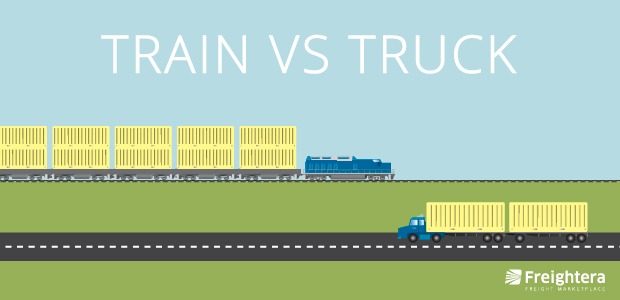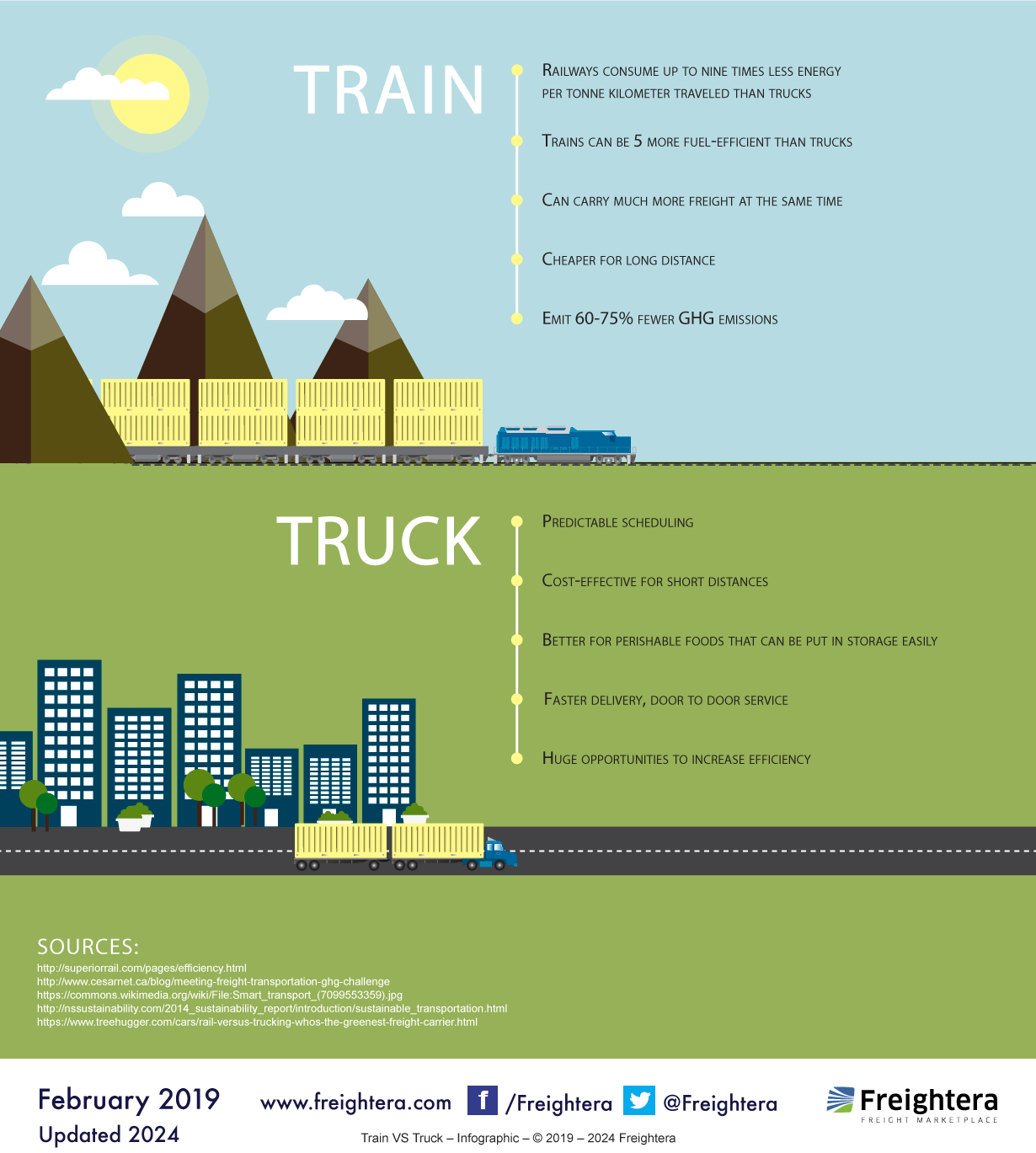Train vs. Truck Shipping: Pros and Cons [Infographic]

Freight Shipping by Train vs. Truck: Advantages and Disadvantages
[Updated July 2024]
Are trains or trucks the more efficient mode of freight transportation, and what are the pros and cons of using each of them?? See our new infographic for answers to these questions.

Train
- Railways consume up to 9x less energy per tonne-kilometer traveled than trucks
- Trains can be up to 5x more fuel-efficient than trucks
- Can carry much more freight at the same time
- Cheaper for long-distance
- Emit 75% fewer GHG emissions
Truck
- Predictable scheduling
- Cost-effective for short distances
- Better for perishable foods that can be put in storage easily
- Faster delivery, door-to-door service
- Huge opportunities to increase efficiency
Some bonus facts
Freight trains can reach as much as over 15000 feet in length (roughly 4500 meters) and, when fully loaded, can weigh over 3.5 million pounds (around 1600 metric tons).
In the USA Rail freight transport accounts for a third of all intercity freight volume. Yet it accounts for only about 2% of all transport-related emissions.
A single gallon of diesel fuel is enough for a freight train to transport a ton of freight for 470 miles as opposed to roughly 134 miles that a truck could do with the same amount of fuel and the same cargo weight.
As we move to renewable energy sources, electric trains will become even more efficient and clean compared to other modes of freight transport.
As per the Association of American Railroads, freight railroads account for only 0.5% of all of the USA’s greenhouse gas emissions. Heavy-duty and medium-sized rucks, on the other hand, are second only to passenger cars making up around 25% of the USA’s emissions in 2020.
Save money, protect our planet, and ship your freight by rail with Freightera. You can get instant, online freight quotes from 100s of carriers in 15 seconds.